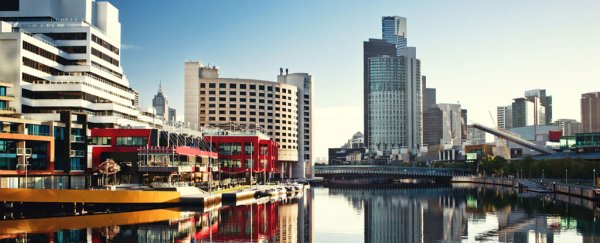Melbourne, Australia has been crowned the most 'liveable' city in the world, in a report examining the living conditions of 140 cities from around the globe.
But while Melburnians might feel pretty smug about taking out the top spot – and Australians generally, with the nation occupying three positions in the top 10 – it's not all good news, with the research finding liveability across the globe has dropped sharply over the last year.
According to the Global Liveability Ranking 2016, the quality of living conditions has deteriorated in 29 of the 140 cities in the past 12 months, with the authors attributing the decline to fears over terrorism, social unrest, and civil wars.
The report, published by researchers at The Economist Intelligence Unit, gauges liveability in terms of the severity of challenges that might affect a person's lifestyle in any given location, using five key criteria to rate each city: stability, healthcare, culture and environment, education, and infrastructure.
Once all those criteria are rated, the results are added up, giving two countries in particular – Australia and Canada – plenty of reasons to feel good about themselves.
Like Australia, Canada also has three cities in the top 10 for 2016 – Vancouver, Toronto, and Calgary.
This is the sixth year in a row that Melbourne has claimed the top spot, consistently offering the best living conditions in the world, according to the researchers' criteria.
Overall, the report seems to suggest that when it comes to a city's living conditions, the biggest cities could be at a disadvantage, with smaller and medium-sized metropolises appearing to offer more liveable environments.
"Once a city expands to a certain size, then a variety of things happen," urban planner Douglas Baker from the Queensland University of Technology in Australia, who wasn't involved with the report, explained to the ABC.
"One, affordability is hit. Secondly transportation [is] a major area of entry to the job market so people are commuting – and that's not liveable when people are commuting an hour each way. That's 2 hours a day."
And the net result of all that extra time involved in transport means that larger cities can often suffer worse pollution from vehicles – another factor affecting liveability in a big city.
In addition, a medium-sized city like Melbourne or Calgary offers other kinds of benefits. According to urban researcher Laurel Johnson from the University of Queensland, smaller cities can provide low population density, a range of housing options, and better focus on green spaces.
This means residents can live in a house "with a yard, some chickens, a dog, [and which] is still within a commutable distance to the CBD where they could work white collar jobs", she told the ABC.
These kinds of considerations are also noticed by the authors of the report:
"Global business centres tend to be victims of their own success. The 'big city buzz' that they enjoy can overstretch infrastructure and cause higher crime rates. New York, London, Paris, and Tokyo are all prestigious hubs with a wealth of recreational activity, but all suffer from higher levels of crime, congestion, and public transport problems than are deemed comfortable."
You can find the full report on The Economist website, but here's their top 10 most liveable cities:
- Melbourne, Australia
- Vienna, Austria
- Vancouver, Canada
- Toronto, Canada
- Calgary, Canada
- Adelaide, Australia
- Perth, Australia
- Auckland, New Zealand
- Helsinki, Finland
- Hamburg, Germany
At the other end of the scale, the least liveable cities in the world look like this: Kiev, Ukraine (131); Douala, Cameroon (132); Harare, Zimbabwe (133); Karachi, Pakistan (134); Algiers, Algeria (also 134); Port Moresby, PNG (136); Dhaka, Bangladesh (137); Lagos, Nigeria (138); Tripoli, Libya (139); with Damascus, Syria, coming last at 140th.
